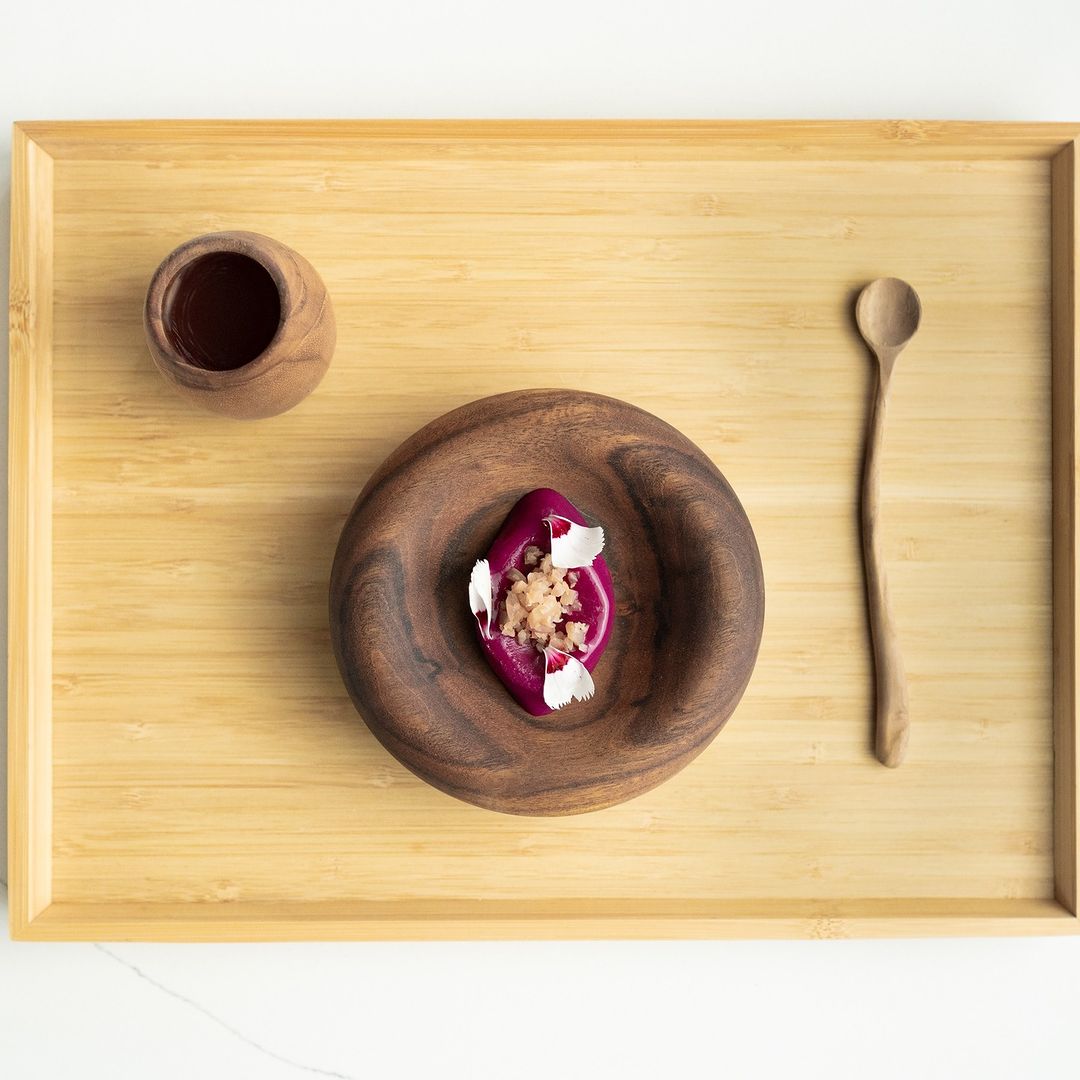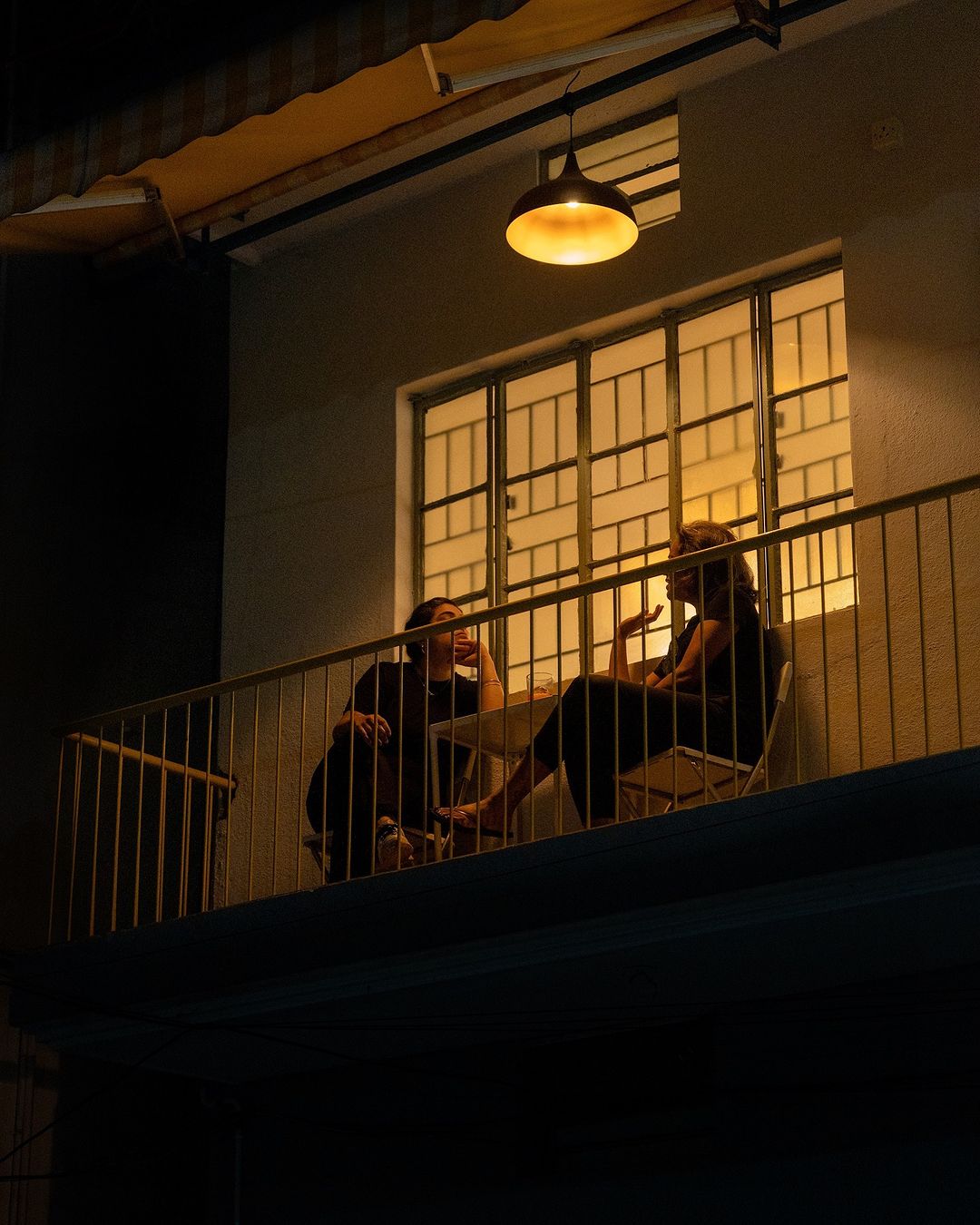Purple yam ice cream anyone? Maybe a 20 course bite-sized degustation menu or a meal that promises you a roller coaster ride with theatrics and super heroes? The post-apocalyptic fine dining scene is rising to the challenge of entertaining and satisfying the jaded fine diner.
The Fat Duck, a three Michelin-starred restaurant offers a multi-course tasting menu “Sensorium” priced at around £395 per person and attracts the epicurious from all across the world. It’s helmed by Chef Heston Blumenthal, and he invites them to embark on “an adventure for the mouth and the mind” and artfully blends science, AI and culinary magic into the experience. The Fat Duck is going strong, but the equally famous Noma in Copenhagen will be shutting its doors, despite having a dedicated clientele willing and able to pay £600 per head for a tasting menu that could feature, among other things, Mouldy Egg Tart and Reindeer Heart Tartare.
Fat Duck’s menu map
David Kinch, Chef-Owner of Manresa, California, known for his clever use of Japanese, French and Catalan influences in his multi-course “creative tapas” degustation menus, has also shut shop, turning Manresa into a pop-up destination for visiting Michelin star chefs. Closer to home, Chef Aditi Dugar of Masque, one of India’s top restaurants recently hosted Chef Daniel Humm and his team from New York’s Eleven Madison Park, for a two-day collaborative 10-course, plant-based pop-up — that was sold out in nine hours. It was priced at Rs 40,000 per person.
Clearly, there are people ready to travel for miles and willing to pay a good price for a memorable meal. But how do chefs keep these uncompromising culinary thrill seekers happy?
“It’s a tough call,” says Johnson Ebenezer, of Farmlore, who teamed up with Chef Mythrayie Iyer to create sustainable culinary magic at their 18-cover, chef’s table-style restaurant in the middle of a 37-acre farm on the outskirts of Bangalore. “In the age of the ’gram, our plates have become smaller, our cameras began calling the shots and we focused more on where and how our food was sourced. Diners want more flavour and less pretence, technology has made a big impact in the kitchen and ‘farm to table’ has taken on a whole new meaning. The Indian dining scene has never been more vibrant with international chefs coming down for pop-ups, while local chefs share the excitement of foraging hyper-local ingredients and diving into regional dishes with aplomb. Local herbs like methi and curry leaf, masalas and spices, find their way into crafted dessert menus. It’s a creative chef’s dreamscape,” he says.
Jamun, pickled karonda berries served with a drink made from lacto-fermented jamun seeds, strawberry and fennel — served at Farmlore
Are diners simply looking for high quality food, served in spaces that are accessible and unpretentious on the one hand and a dining experience that titillates and wows all their senses on the other. Maybe a bit of both?
The Monarch Theatre in London’s SOHO district, is a 20-seat venue serving a ten-course tasting menu while super heroes and super villains keep you company. Touted as a “gastronomic amusement park where nothing is quite what it seems,” dishes by Head Chef Alin Ciubotaru take guests on a culinary and visual journey with the help of 360-degree projection mapped walls.
The Monarch Theatre (pre-presentation)
Closer to home, The Ritz Carlton Bangalore recently launched their Dinemation experience where AI and tech come together to create 3D effects and spin a fairytale through the multi-course meal, complete with floating urns and smoking cauldrons. Perfect for landmark celebrations and conversation starters, these immersive experiences are specially geared for those looking for some theatre and cinematic magic to be served up along with their food.
But beyond the lure of tech and magic tricks, gourmands are going the extra mile, seeking out spaces in countryside farms, atop remote mountain retreats and obscure suburban bistros to satisfy their picky palates.
Farmlore offers a minimalist setting — elegant but non-fussy dinnerware and an open kitchen. The starkness and absence of embellishment encourages diners to focus on the food, like The Fat Duck with its plain white-washed exteriors and stark interiors. But Chef Blumenthal has a plethora of tricks that keep you engaged and riveted to your £3,000 a piece, hand stitched leather chair for five hours.
Tucked away in the by-lanes of a Bangalore suburb, Kanishka Sharma and Pallavi Menon are drawing the discerning food lover to their cozy bistro called NAVU. It means “we” in Kannada.
“We want our diners to feel [like] they were walking into our living room, but getting a gourmet dining experience. There is nothing casual about our food,” says Sharma.
(L-R) The quaint exteriors of the humble home to NAVU, where Chefs Pallavi and Kanishka are seated; Sunchoke soup (A multilayer gourmet offering crafted for Bangalore)
Their blackboard menu offer dishes as diverse and eclectic as cauliflower creme brulèe with truffle oil, mustard ice cream, Turkish cilbir — a poached egg with garlic labneh and chilli flakes or briny sardines and sweet caramelised onions, on top of a pissaladière, which is a cross between a bread and pizza.
Following his heart to Singapore, five months ago, Chef Abhijit Saha opened his newest passion project, Ammakase, at One Raffles Place in the heart of Singapore’s Business District.
“It’s our take on Omakase, a Japanese dining philosophy that involves implicitly trusting the Chef to choose your meal. ‘Amma’ means mother in Tamil and we have combined the two concepts into Ammakase. We have no menu and our neo-Indian cuisine is culled from mothers’ home recipes across all the coastal Indian states as well as Sri Lanka along with avant-garde culinary techniques drawn from European and Asian kitchens,” explains Saha. Guests walk in with just a vague idea of what to expect at Ammakase’s “experiential” ten course dinner and “indulgent” eight course lunch, knowing that Saha likes to bring ingredients and flavours together in unexpected ways.
Spiced guacamole, pomegranate and mint chaat in a crisp teff flour shell, Kerala chicken stew with slivers of Japanese cucumber, pan seared French style duck with Guajarati style tomato-date chutney, or sea bass with gongura leaves on a bed of heartwarming khichdi, are some examples.
Four months post opening, Ammakase made it to the top of Tatler’s list of Singapore’s best Asian restaurants.
Ossetra caviar, Japanese oyster, drizzled with aam panna dressing, served at Ammakase
When Chef Prateek Sadhu moved on from Masque in April 2022, no one really expected him to leave the buzz of Mumbai behind and open Naar, a 16-seater restaurant with a view of the snow-capped Himalayan peaks in Kasauli, Himachal Pradesh. After a stellar journey through some of the top five star kitchens across the country, Sadhu had found his true calling and his definitive food philosophy as Chef Partner at Masque, successfully turning it into India’s top restaurant. Now closer to his Kashmiri roots, he inspires the truly epicurious to travel over vale and hill, to reach NAAR, located in Amaya, a holistic mountain top retreat. Translating into “fire” in Kashmiri, NAAR offers six different menus that follow the distinctive mountain seasons — spring, summer, monsoon, autumn, pre-winter, and winter. And he uses regional produce in ways that can only be imagined.
The staff may wear casual jeans, cotton tees, and upcycled denim aprons, but there is nothing remotely casual about the three hour dining experience that takes diners through different scenic spots on the property, between courses. The menu is a creative magnum opus ranging from freshly caught and cured Himalayan trout, to smoked sausage and eggplant filled mini sandwich on a bed of fig leaves and marigold petals, and drizzled with beetroot powder, tart tree tomatoes that are charred, marinated, grilled and then pulled together in a dish, and myriad ways of turning the ordinary into the extraordinary.
The R&D happens in a converted cowshed where the Sadhu and the Amaya team work their alchemy.
(L-R) NAAR, nestled in the hills; Nimbu Saan – made from GAL GAL.
“Whether chefs need to use visual storytelling to enhance the dining experience, get super heroes or artificial intelligence in on the act, or feature premium global ingredients in a multi-course degustation experience, casual and ‘more-ish’ foods are dominating the restaurant scene at the moment, with conversations around inclusivity and approachability. Millennials and Gen Z are happy to pay for unique narratives and service styles as well as exclusivity and creativity — which, to them, comprise luxury dining — instead of aloof waiters and white table clothed formality,” concludes Ebenezer.
Words by Jackie Pinto.
Feature Image courtesy Ignasi Monreal, titled – Illuminachos.













